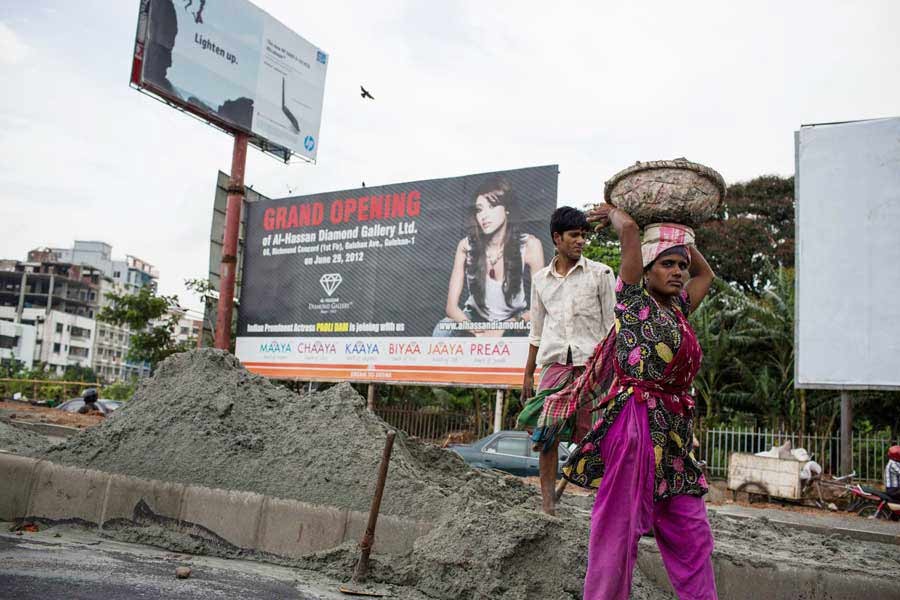The issue of inequality occupies a dominant place in development discourse and debate pervading across the globe. Reportedly, the economy of Bangladesh is infected by inequality malaise. Not only critics but also the government admits that inequality has been increasing with the rise in GDP growth. It is highly desirable that gradual decline in income inequality should be coincident with persistent growth.
We cannot deny the hard truth that income inequality is inevitable. That every household's income or every worker's income or every employee's income or every farmer's income or every businessman's income would be equal to one another is invariably inconceivable. If this is the case, why are we so much concerned about it? Certainly, there is a degree of inequality beyond which it appears as a threat. So the main theme of my discussion is to examine the basic question: When does income inequality really matter?
Inequality is incomprehensible without any comparison. Simplistically, comparisons may be between two farmers, two employees, two workers, two businessmen, two persons or two or more groups of two different regions or a country or across countries. Inter-group comparison may be made dividing the population into several groups. Hypothetical examples can better explain the phenomenon.
X and Y are two employees in a firm. At present, X's income is Tk.5,50,000 per annum while Y earns an annual income of Tk.6,00,000.Their income levels (consolidated) are not equal and hence income inequality prevails between them. Is it inevitable and acceptable? The question needs to be examined minutely. More information is required about X and Y. Both X and Y joined the firm on the same date three years back in the same position. Y is reported to be more efficient than X.
For the first two years, there was no difference in their pay level. Following the proof of greater efficiency, Y's pay was raised to Tk.6 00,000 from the beginning of the 3rd year of service. It is also learnt that efficiency criteria and measurement were accurate and also applied free of bias. Addition to pay was less than 10 per cent of X's pay. It is also true that both of them have equal level and quality of educational qualifications and skills as required by the firm. Moreover, it was mentioned in the terms of employment that employees demonstrating greater efficiency in performance would be rewarded with an extra increment of maximum 10 per cent of one's pay.
If grossly all these conditions are taken into account, Y's pay rise is very justified and as such cannot be treated as a case of income inequality in true sense. We see that there are valid reasons for difference in income level of X and Y during the 3rd year of service.
Obviously the above example belies the existence of inequality problem. That sort of inequality exists and would continue to exist. More specifically, it is natural. We should look for the characteristics of income inequality that is abnormal or extreme and needs to be addressed. Again an alternative example (retaining all information except percentage of extra increment) is presented assuming that Y's pay was raised by 100 per cent i.e. raised to 1100,000 instead of Tk. 6 00,000 on account of greater efficiency relative to X. This amount of extra increment sounds exorbitantly high and is in violation of employment terms. This is perceived to be a case of extreme inequality.
It may so happen that most of the farmers' average income has fallen by 30 per cent as a result of fall in paddy price as they did not get access to government support price, but some farmers were privileged with government-set price. This event led to inequality of income between two groups of farmers. Here it is obvious that a discriminatory situation was created and not tackled by government intervention. This inequality is not natural, rather artificially created. The majority of the farmers have become victims of discrimination. This discrimination-led inequality really matters and spurs criticism by economists and social thinkers.
The cases of extreme inequality (generally indicated by gini coefficient of 0.50 or more) may occur when disaster-struck farmers fall far behind other groups of farmers or non-farmers not directly affected by disasters. Income inequality so suffered by a section persists until and unless the victims are bailed out by the government. Extreme or abnormal income inequality is, in most cases, the consequence of discriminatory attitudes or actions and negligence of the government on the one hand, and of the corporate authorities in the private sector on the other hand.
A different example of two businessmen, A and B may further explain the nature of income inequality. They both run hotel business. Annually, A earns a profit of Tk 12.00 lac ,and B earns only Tk 6.00 lac. They have the same size of investment each and sell same types of food items. Why does A earn more? Is it a case of inequality? How can it be explained? There are millions of businesses in our economy. Naturally, each of them may not earn the same amount. Differences in earnings by a large margin may be triggered by innumerable factors. Here only the cases of discriminations in access to business support services may come under abnormal inequality. Low differences in earnings would be covered in the range of minimum unavoidable inequality level
How much unequal income makes 'inequality' trivial or objectionable is a matter of research and consensus based on philosophy of maximising human welfare. We cannot but recognise that a minimum level of income inequality must prevail in the economy. The attention of the state as well as corporate governance should be focused on the cases of extreme or abnormal income inequality caused by discrimination, deprivation, irresponsibility, corruption, exploitation, disasters, and accidental shocks to keep on minimising inequality level.
Haradhan Sarker, PhD, is ex-Financial Analyst, Sonali Bank & retired Professor of Management.


